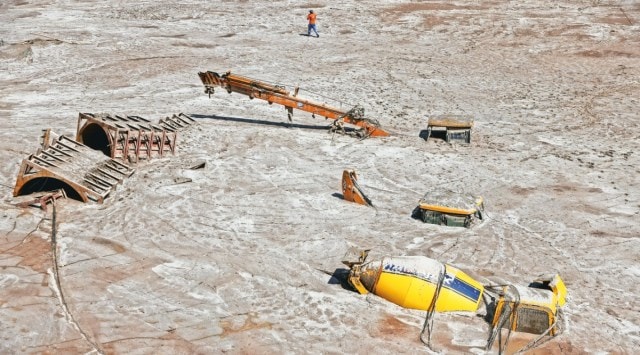Rescue and relief efforts are accelerating following the glacial lake outburst flood (GLOF). Two main factors being investigated as potential exacerbating triggers for the impact of the GLOF are the high storage volume in the reservoir of the Teesta-III dam and the failure to open its spillways.
The opposition Sikkim Democratic Front (SDF) in Sikkim has called for a “forensic probe” into the dam breach by central agencies after Chief Minister Prem Singh Tamang blamed the “substandard construction” of the Teesta-III dam.
Sikkim Urja Limited, the company responsible for the development and operation of Teesta-III, is in damage control mode. It announced a financial relief package of Rs 70 crore for four GLOF-affected districts on Saturday. This relief aid is in addition to the aid provided by the state.
The Rs 13,965-crore Teesta-III project has a history of questionable compromises, including a minimal allocation of Rs 2 crore towards its mandatory disaster management plan in 2009, as highlighted by the CAG.
The GLOF warning was issued by the ITBP between 12:40 and 1 am on October 4. While this allowed time to evacuate people from the river in Chungthang before the floodwaters reached the village, attempts to open the dam’s spillways were apparently unsuccessful.
A team from the Teesta-III project attempted to open the spillways but was hindered by the rapidly rising waters, raising concerns about dam maintenance since the spillways are electronically controlled and should not require manual intervention.
“A dam of this size does not have mechanical spillways. The flood would have taken over an hour to reach the dam site from the lake and around half an hour from the flood monitoring station at Lachen, providing sufficient time to operate the gates through remote control unless the spillways were damaged or stuck for some reason,” said an engineer from the Central Water Commission ().
Sunil Saraogi, the executive chairman of Sikkim Urja Limited, confirmed that Teesta-III’s spillways were operated electronically and stated that he would be able to verify the situation once communications are restored.
Investigators are likely to examine whether Teesta-III was operating above its capacity on October 3, which could have contributed to the severity of the GLOF. Teesta-III had a gross storage capacity of 5.08 million cubic meters and a live storage capacity of 3.3 million cubic meters.
The combined discharge of storage water and GLOF from Teesta-III impacted NHPC’s 510 MW Teesta-V and the under-construction 500 MW Teesta-VI downstream in about an hour, causing extensive damage and destroying all the bridges in its path.
The GLOF overtopped the Teesta-V dam, causing significant damage to the approach road, the control room for remote operation, transmission towers, and the power station. All connecting roads to the project site and parts of the residential colony were severely damaged.
The GLOF also disrupted ongoing works at Teesta-VI, where floodwater entered the powerhouse and the transformer cavern, washing out bridges and causing significant damage.
Himanshu Thakkar, coordinator of the South Asia Network on Dams, Rivers and People, highlighted the absence of the Teesta-III dam in the CWC’s National Register of Large Dams (NRLD) and the lack of information on the dam’s safety mechanisms and last inspection.


